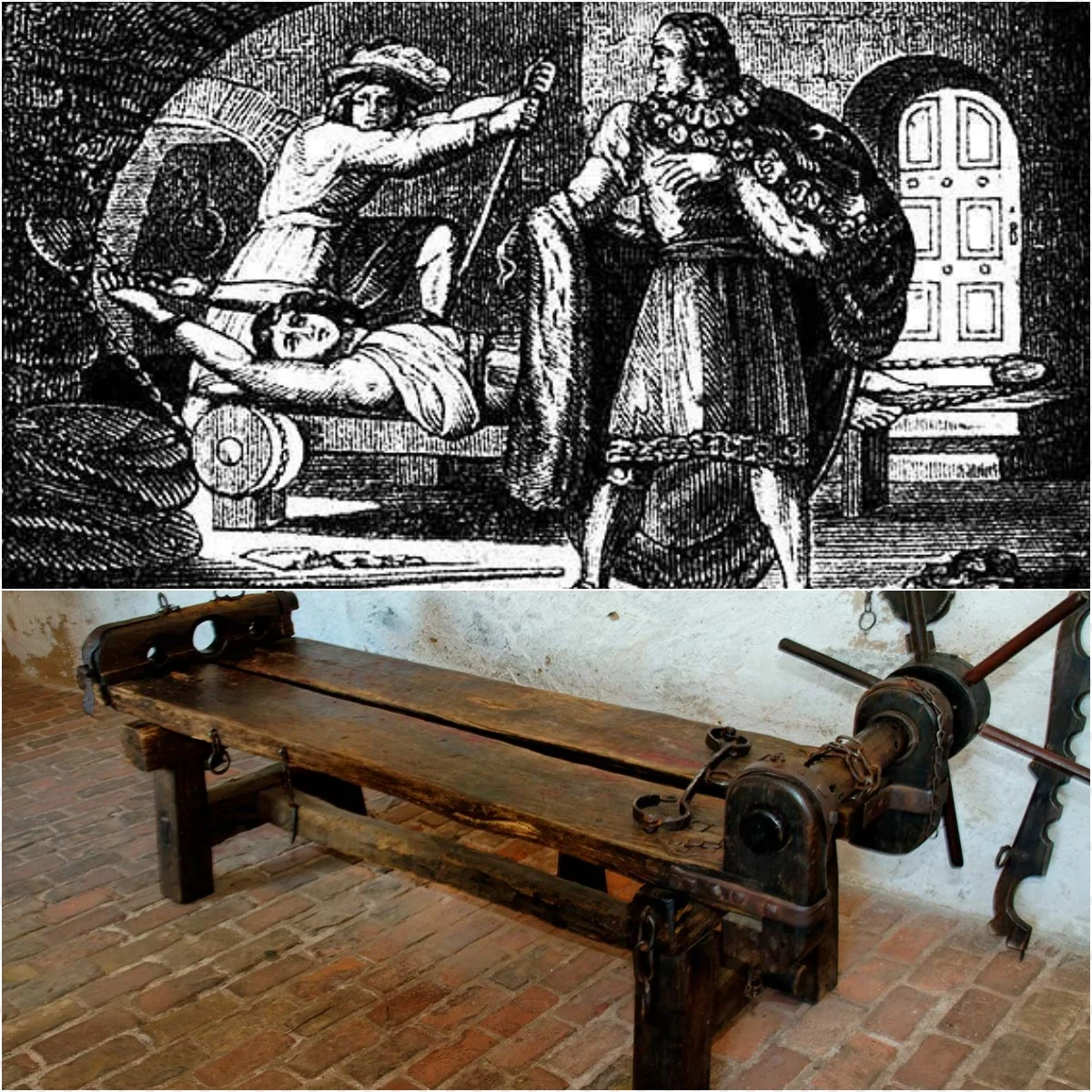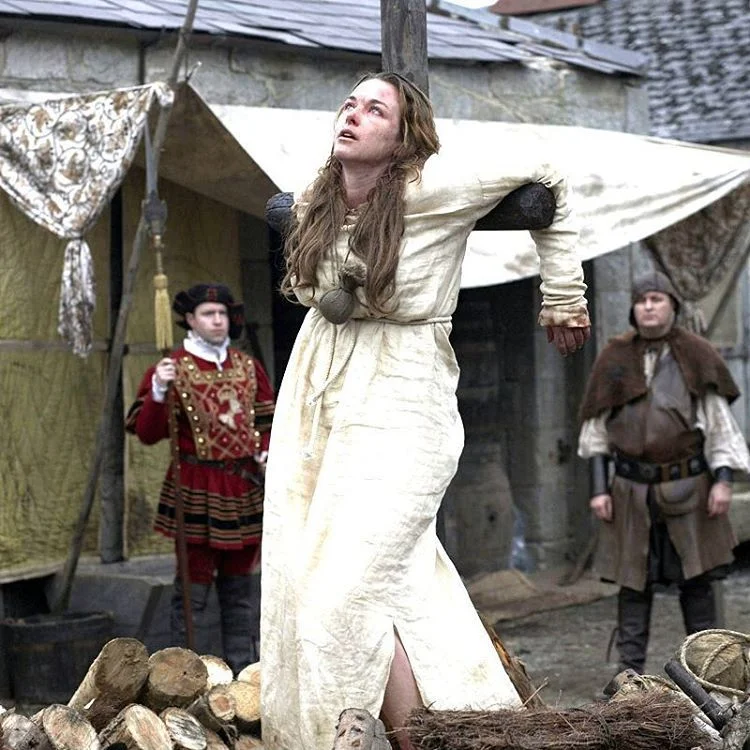In the turbulent reign of King Henry VIII, one woman’s courage has echoed through history. Anne Askew, a 25-year-old poet, writer, and preacher, became a symbol of conviction and resilience in an era when women’s voices were often silenced. Known as the “Fair Gospeler,” she challenged laws restricting access to the Bible and shared her faith publicly, despite the risks. Her steadfastness eventually led to her imprisonment and her death in 1546, making her one of the most remarkable figures of the Tudor period.

Portrait of a Heroic Woman – Anne Askew
A Voice Ahead of Her Time
Born in 1521, Anne Askew displayed rare intellect and determination from an early age. She embraced the spirit of the Protestant Reformation, joining secret gatherings to study scripture and discuss reformist ideas. In 1543, Henry VIII introduced the Act of the Advancement of True Religion, which prohibited women and members of the lower gentry from reading the Bible. Undeterred, Anne continued to speak publicly, reciting verses and teachings that inspired ordinary Londoners.
Her eloquence and courage earned her the title “Fair Gospeler.” Historical accounts describe crowds gathering to listen to her words, captivated by her presence and her refusal to conform. This defiance soon attracted the attention of authorities determined to suppress religious dissent.
Arrest and Imprisonment

She is the only woman recorded to have been brutally tortured in the Tower of London.
Anne’s boldness eventually led to her arrest. She was seen not only as someone who had broken the law but also as a figure capable of influencing the wider public. Taken to the Tower of London, she faced interrogations and relentless pressure to identify others who shared her faith. Authorities hoped she might implicate prominent individuals, including Queen Katherine Parr, Henry VIII’s sixth wife, who was known to sympathize with reformist ideas.
Despite the pressure, Anne refused to betray her friends or allies. Her silence under questioning highlighted her moral strength and her determination to protect others.
Torture in the Tower
Anne’s time in the Tower of London became legendary. She endured severe treatment that tested her physically and emotionally, but she refused to yield. Accounts suggest that officials tried to break her resolve through harsh methods, yet her determination never wavered. Even when weakened and in pain, she would not abandon her principles.
This period in her life marked her as the only woman historically recorded to have faced such treatment in the Tower, underscoring both the extraordinary risks she took and the determination of authorities to silence her.
Execution and Legacy
On July 16, 1546, Anne Askew was condemned for her defiance. Unable to walk due to the hardships she had suffered, she was carried to the site of her execution at Smithfield in London. She met her end with dignity, maintaining her composure even in her final moments.
Witnesses later described the quiet strength she displayed, noting that she never betrayed those who had stood beside her. Her death, the last under Henry VIII for charges of heresy, cemented her legacy as a courageous martyr of her faith.

Her life became the inspiration for a famous film.
The Historical Context
Anne’s fate was shaped by the religious turbulence of Tudor England. Henry VIII’s break from the Catholic Church and his establishment of the Church of England created a landscape of shifting loyalties and constant danger for reformers. The 1543 law banning Bible reading for many was part of his effort to curb the spread of Protestantism, and Anne’s open defiance directly challenged royal authority.
Her connection to Katherine Parr placed her in an even more precarious position, as factions at court sought to undermine the reformist queen. In this volatile atmosphere, Anne’s arrest and condemnation were both political and religious acts.

The Bigger Picture
Anne Askew’s martyrdom resonates beyond her time, illustrating the cost of standing for one’s beliefs in the face of oppression. Her story highlights the intersection of faith, gender, and power in Tudor England, where a young woman’s voice could shake the foundations of authority. The crowds that flocked to hear her and witness her execution, as recorded in contemporary accounts, show the public’s hunger for reform and admiration for her bravery. Her legacy endures in Protestant narratives, inspiring movements for religious freedom and women’s agency. In today’s context, Anne’s courage mirrors modern struggles for free expression, making her a timeless figure. Posts on X often cite her as a “forgotten heroine,” with users like @TudorHistoryFan praising her defiance, reflecting her lasting impact.
Challenges and Resilience
Anne faced immense challenges: a patriarchal society that restricted women’s roles, a legal system that criminalized her faith, and physical torture designed to break her spirit. Her small stature and youth—she was only 25—made her endurance all the more remarkable. The psychological toll of repeated torture, coupled with the knowledge of her impending death, tested her resolve, yet she never wavered. The slow-burning fire, intended to prolong her suffering, was a final act of cruelty, but her silence protected her allies, including Katherine Parr, who outlived Henry VIII. Anne’s ability to maintain dignity under such conditions challenges modern readers to consider the strength required to defy tyranny.
Anne Askew’s horrific death on July 16, 1546, marked the end of a life defined by courage and conviction. As the Fair Gospeler, she defied Henry VIII’s oppressive laws, preached to the masses, and endured unimaginable torture without betraying her faith or friends. Her story, from secret Bible meetings to the flames of Smithfield, is a powerful reminder of the cost of standing for truth. As we reflect on her legacy, let’s celebrate her as a Tudor heroine whose light burned bright even in darkness.
